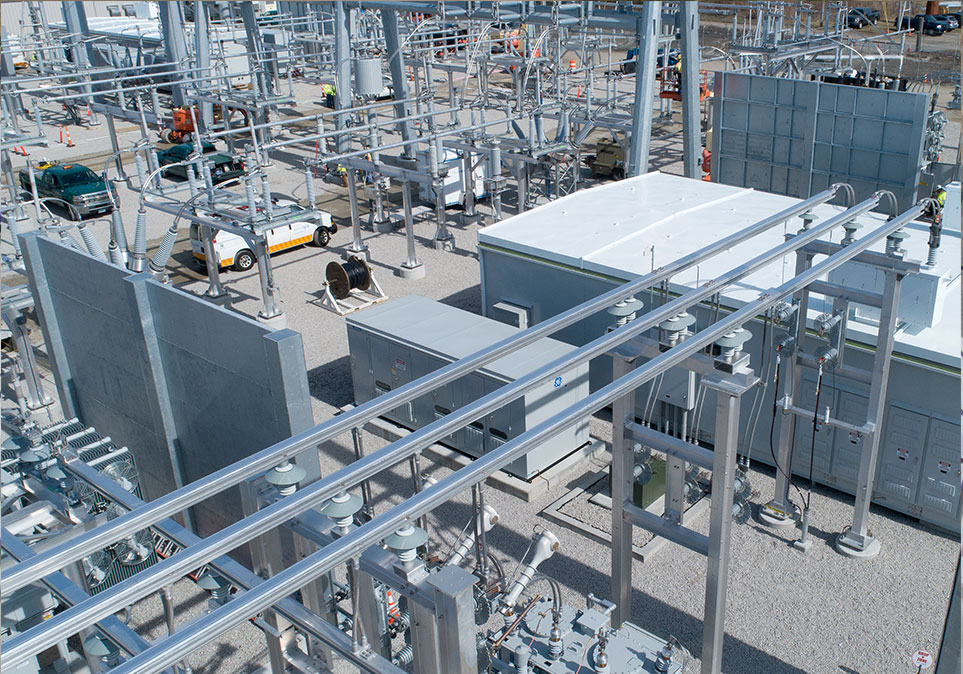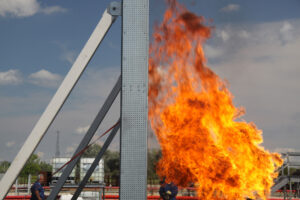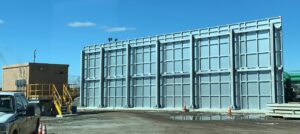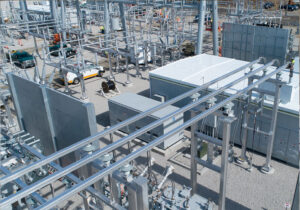Nowadays, many property owners use fire partitions, fire barrier construction, and coatings wrap panels for their building projects.. This is done to prevent the spread of fire throughout the building.
Although most people use the two terms— fire partitions and fire barriers interchangeably, mainly because of their similar functions, they are not the same. Each has its unique features and advantages. Understanding the differences between both terms will not only broaden your knowledge about fire management systems but also help you to maximize the benefits of each.
To help you understand the two, we will be breaking down both terms.
Fire Partitions
Fire partitions are fire-rated building components that can be used to separate the space in which a fire has occurred. They are majorly used in hotels, dormitories, shopping malls, and other multi-dwelling units. Fire partitions come in different materials, including metal, sprayed-on foam, and wire mesh. However, there are two types of fire partitions: Horizontal and Vertical fire partitions.
- Horizontal fire partitions: This type of partition is horizontally built. Some of the most popularly used horizontal partitions include low combustible ceilings, Independent ceilings (ceiling membranes), Suspended ceilings, etc.
- Vertical fire partitions: They are vertically built, and they also prevent fire outbreaks across rooms.
Generally, fire partitions are used within the inner walls of a building. Although they also resist flame and fire, they provide lesser structural support when compared to fire barriers. Still, according to IBC regulations, fire partitions must always be in place in every building.
An example of fire partitions is cement or gypsum board. They are used in the construction of thinner interior walls. It is essential to note that although fire partitions also prevent flame spread, they can only last for 30 to one hour, depending on the type of building.
Fire Barriers
Fire barriers are also fire-rated walls designed to stop the spread of fire through a building. They are made from materials such as concrete, masonry, or gypsum. They are used to restrict fire spread across the building by separating hazardous property control areas from other portions of the building.
Materials Use For Making Fire Barriers
Different types of materials have been used to create fire barriers. Examples of such materials are gypsum, masonry, and concrete. In some cases, different combinations of wood products like cement and cellulose fibers are mixed. Such materials are flame retardants and are used in creating the floors and walls of a building to serve as fire barriers between each room.
Fire curtains can also be used to compartmentalize a building. Like other materials, fire curtains also prevent fire or flame spread in wide doorways and open spaces. They are used in situations when construction materials are not applicable for a permanent barrier. If you’re choosing fire curtains, ensure that the space is large enough to contain the employees.
Types of Fire Barriers
The following are the most commonly used barriers:
- Firewall: This wall is designed to resist fire from the outer part of the building. The wall captures the flame and prevents it from spreading beyond the origin of the fire. Its resistance is determined by the firewall rating.
- Smoke Barrier: They are used to contain the smoke and prevent it from spreading for at least one hour.
Types Of Firewalls
One of the IBC regulations is that every building should have a minimum of three firewalls. These are majorly used to separate buildings into different compartments. Hence, fire partitions and fire barriers must be installed in the walls separating different rooms.
- Regular firewalls: They are used to separate buildings, plants, or structures to prevent fire spread.
- Fire barrier walls: Although these walls are fire-rated, they can’t be used beyond the roof or below the structure; hence they can’t be used alone.
- High challenge firewalls: They are used in the separation of different occupancies. They also reduce the fire size area in exit stair enclosures.
Benefits of Fire Barriers
One of the major advantages of fire barriers is that they can prevent fire from destroying both properties and human lives. Since fire disasters are unpredictable events, every property owner needs to install fire barriers on their buildings. It is essential for businesses that have many employees and work with volatile and delicate materials that can cause an explosion.
Aside from containing the fire within an area, fire barrier panels can also offer aesthetic benefits. Since they are available in different colors and finishes, they can also be used to beautify an area.
How to Choose the Right Fire Barrier Material
Before you choose a fire barrier for your building, you must consider occupancies and the type available.
For a building with high occupancy, ensure that the fire barriers have a minimum of a 4-hour fire rating, while a duplex can use a 1-hour fire rating. However, it would be best if you considered areas like open spaces, atriums, and doorways that can’t be covered by structural materials.
You can decide to combine different ones like fire curtains, partitions, and structural barriers. Or just stick to a single effective one.
International Building Code Regulations
The difference between fire partition and fire barrier can be further understood through the International Building Code (IBC) regulations. According to IBC regulations, the minimum fire rating for a fire partition is 30 minutes. However, for a high occupancy building, it is usually one hour. This means the partition must be able to resist fire and flames for at least 30 minutes or one hour, depending on the building.
On the other hand, according to IBC regulations, a fire barrier must have a 1-hour fire rating. This means it must be able to withstand fire for a minimum of one hour. However, to help contain the spread of flames better, the minimum for buildings with high occupancy is four hours.
For most people, differentiating between a fire partition and a fire barrier can be difficult. However, you can easily spot the differences with the above information. It is also essential you consult professionals for the installation of your fire protection systems.
You can speak to us here; https://firebarrierexperts.com/ to learn more about fire partitions and barriers. We can also help you select the most suitable one for your type of building and business.
Sinisi Solutions
75 Main St, Manasquan, NJ 08736
732-232-2100




